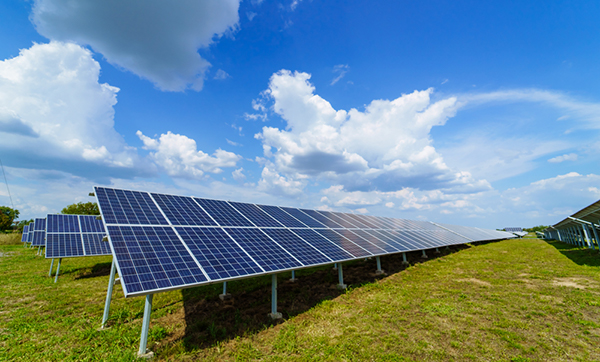Solar energy is the process of converting the energy from the sun into either electrical or thermal energy. It is known as the most abundant and cleanest renewable energy source available. Thankfully, here in America, we all have access to some of the most advanced solar technologies made, allowing us to harness this astounding power from the sun into electricity.
Solar Technology
There are three primary avenues for you to use solar energy. One is concentrating solar power (CSP), one is solar heating and cooling (SHC) and the last is photovoltaics. Both CSP and SHC utilize solar power by concentrating the heat the sun generates to heat water or to operate turbines, which then create electricity. This is most often utilized in CSP power plants. As a homeowner, your most practical avenue of solar power will be the photovoltaic technology (more on this below). This is the process of generating electricity from the sunlight to power anything and everything that uses power within your house. Of course, photovoltaic technology can also be used to power commercial businesses as well.
The Current Outlook of Solar Energy In America
Currently, solar installations are producing more than 69 gigawatts (GW) of power. This translates to the energy needed to provide electricity in some form in over 13.1 million households. The last ten years have seen a substantial increase in the industry. It has increased by an average of 50% each and every year, throughout the past decade. Presently, there are more than 2 million individual solar installations in America. These range from large-scale systems to small individual rooftop systems. These systems combine to provide hundreds of megawatts of energy to the country’s power grid.
Key Takeaways About Solar Energy
The sun is a huge, massive, nuclear reactor. The energy that radiates from the sun is produced by nuclear fusion reactions deep in the sun’s core. The sun then sends its energy outward into space, providing both heat and light. Solar power basically utilizes various technologies to harness this amazing power and through photovoltaics, create usable energy. Solar energy is expected to continue to play an important role in the move toward more renewable, clean energy resources.
Harnesses For Solar Energy
There are two main ways to harness the mighty power of the sun and transform it into usable power, such as you would use to power a toaster. These are solar thermal capture and photovoltaics. As mentioned above, photovoltaics is the most commonly utilized harnessing method for private, residential installations. Solar thermal capture is used in larger scale situations when electricity demands are considered massive. They can not only harness the sun to create electricity but to cool and heat as well.
Most Commonly Used Photovoltaic (PV) Energy
The best way to use PV to harness solar power is through the installation of solar panels (or shingles, tiles) that create energy. This energy is then converted into usable energy into an alternating current (AC), which is completed by the solar inverter. Excess energy is then stored via a solar battery. The generated energy is then sent back to the electric grid and will then be credited to your electric bill and reduce the overall cost of powering your home.
Solar energy is one of the easiest, cleanest way to generate your own energy. It is also a great way to create a bit of independence from the grid.
Sources:
https://news.energysage.com/what-is-solar-energy/
https://www.seia.org/initiatives/about-solar-energy

